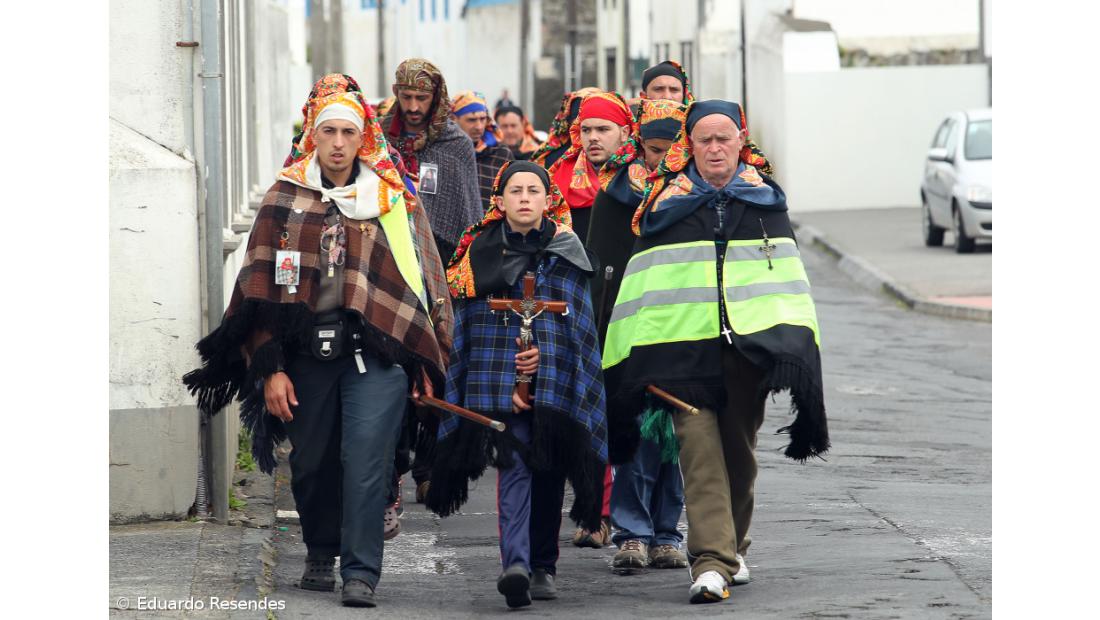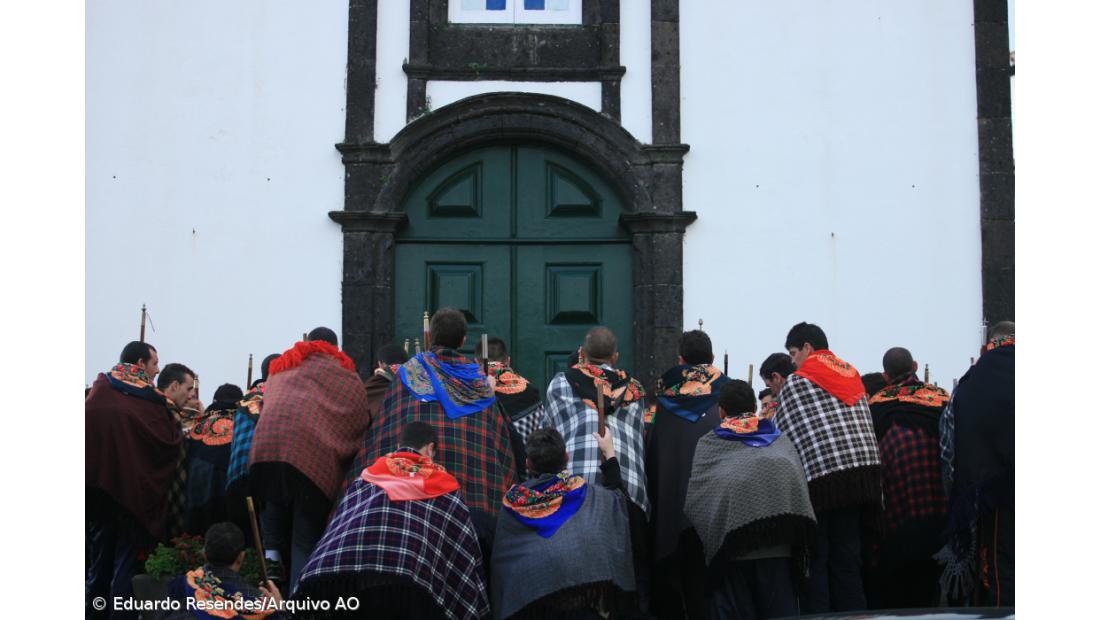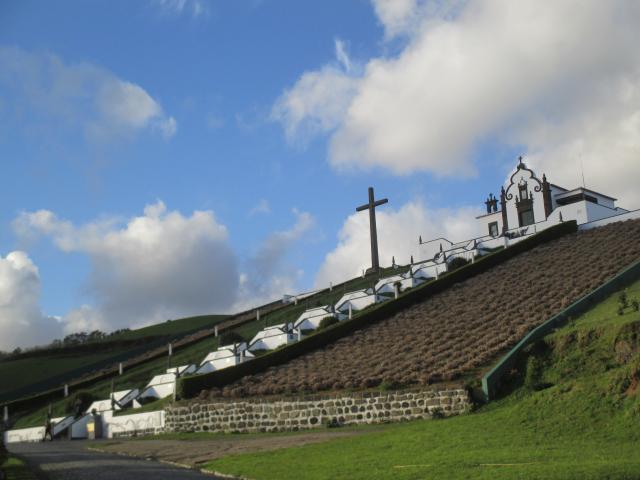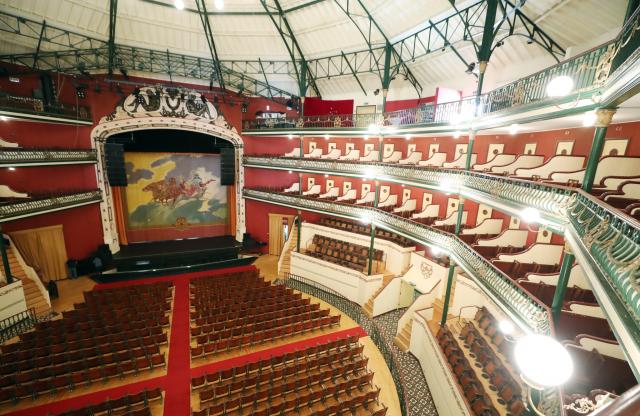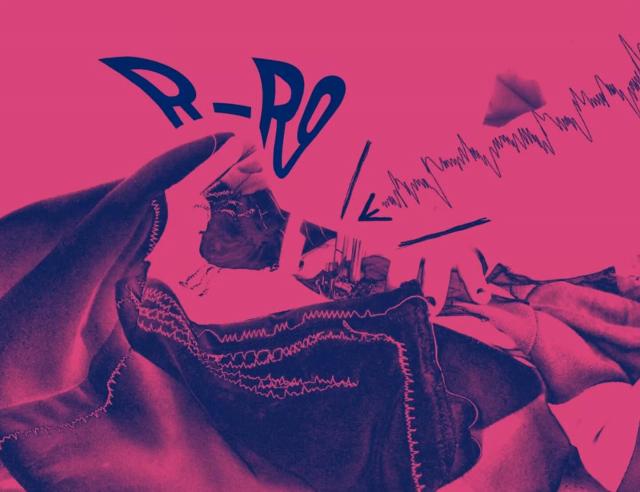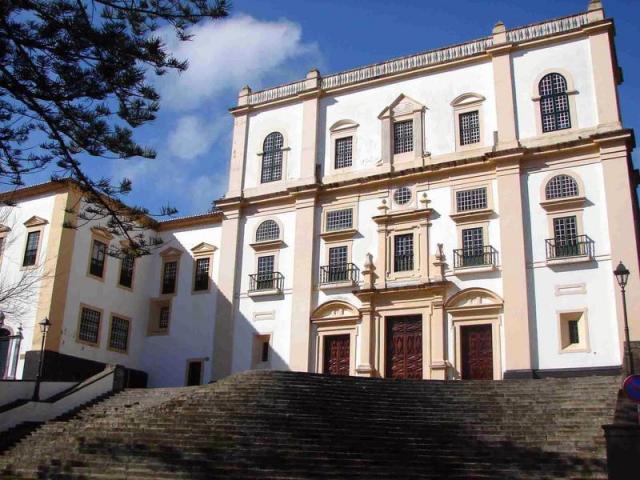But the pilgrimages of São Miguel have not remained unchanged over the centuries. Today, they are held in Lent and composed only of men and boys, in an environment of penance, but it has not always been so.
“It is a centuries-old tradition that has evolved over time,” says researcher Carmen Ponte, who lives and teaches in France, and who is responsible for the pilgrimages' application to the intangible cultural heritage, promoted by the Romeiros de São Miguel Movement.
According to the author of the thesis “Romeiros de São Miguel. Between tradition and innovation”, over time “certain characteristics eventually disappeared, and others changed, such as the period over which the pilgrimages take place, the fact they are composed exclusively of males, the introduction of a regulation that standardized certain aspects, as well as the introduction of helpers”, Ponte reveals.
However, "from all the research I have been able to do, there is no doubt that pilgrimages result from two founding elements: natural disasters and visits to Our Lady. These are two components that have always appeared in the various documents I was able to study," she emphasizes.
In her research, Ponte managed to trace the broad lines of the pilgrimages' history. Thus, at a time when the 500 years of the Pilgrimages are being celebrated, Carmen Ponte says that “it is true that, according to oral tradition, these pilgrimages originated in the earthquakes and volcanic eruptions of the sixteenth century”. In fact, “sixteenth century-chroniclers, such as Gaspar Frutuoso and Friar Diogo de Chagas, in describing these calamities, mention processions and pilgrimages, to designate these spontaneous acts, and even speak of pilgrimages to hermitages”. However, “these sixteenth century texts do not give us enough elements to talk about pilgrimages around the island as they are currently done”.
As Carmen Ponte explains, “it has always been said by several authors, namely in the twentieth century, that the pilgrimages originated in the sixteenth century, in 1522, but there is not much documentation to prove this thesis. Therefore, it is based on oral tradition. What is certain is that, from the seventeenth century on, pilgrimages come much closer to the Lenten pilgrimages we know today”.
"The texts of the chronicler Gaspar Frutuoso himself are very ambiguous. The 1522 catastrophe was very important. Even a novel was made, which Gaspar Frutuoso transcribes in his work, about this calamity. And he mentions processions and pilgrimages. In 1622, to celebrate the centenary of the earthquake, a procession, a pilgrimage, takes place, but it is not specified whether it is around the island”.
Thus, according to the researcher, “in the seventeenth century, several characteristics similar to those of the current Lenten pilgrimages are highlighted”. They are due to this great volcanic eruption of 1630 in Furnas. “On this calamity, Friar Agostinho de Mont'Alverne, in his ‘Chronicles of the Province of São João Evangelista dos Açores’, when reporting the life of the hermits in the convent of Vale de Cabaços de Água de Pau, refers to the pilgrimages and to the specific penance of visiting on foot and barefoot, day and night, the houses of Our Lady on the island. He points out that the total number of hermitages visited was 61, which leads us to believe that there were a significant number of hermitages visited. ”
The researcher also found “a reference to a manuscript written by Father António de Assunção (a document that is missing), which is entitled ‘Pilgrimage that the residents of this island of São Miguel usually do, visiting the churches of Our Lady’. This title shows the existence of these pilgrimages during the seventeenth century”.
In addition, there is “a manuscript written by Father Manuel da Purificação - the minister of this hermitage congregation - which describes, in 1665, in a very succinct way, the pilgrimages made by the islanders of São Miguel. On the left margin of that page, I found a note that refers to the origins of the islanders' devotion for Our Lady. In this text, the author presents some characteristics inherent to these pilgrimages and points out that the objective was to visit all Marian temples on the island”. As the researcher points out, through this document "we verified that there are already visits to the houses of Our Lady, on a route around the island. If in 1635 the number of hermitages visited was 61, in 1650 the pilgrims visited between 60 and 70 temples of female vocation”, he says.
Carmen Ponte explains that “the manuscripts of the eighteenth century allude to pilgrimages, which leads us to believe that they were already a common practice. But, at that time, both men and women, as well as children, participated in these pilgrimages. Pilgrims traveled the island on foot - and barefoot - during several days and nights". Pilgrimages “were held all year round, but mainly in the summer, so there was a significant number of pilgrims”.
“Through the study of several pastoral visits, I concluded that, in the eighteenth century, pilgrimages continue to exist, but, until mid-century, they will appear with a playful character. That is why the diocesan prelate will prohibit female participation and even the pilgrimages themselves – there were dances, chants, and the use of musical instruments. However, the Church's repressive action did not stop this manifestation. In the end, the playful character disappeared, and pilgrimages began to be carried out during Lent, linked to penance".
In the nineteenth century, explains the researcher, “authors confirm that these pilgrimages were rooted in the cultural and religious system, and even report that the most common penance consisted in walking the island barefoot, praying in all churches and chapels, and before all images and crosses”.
“In the twentieth century, other authors confirm that the Lenten pilgrimages, for the male sex, subsisted. With the repression of ecclesiastical authority, the pilgrimage becomes an autonomous manifestation, away from the parishes. There were no pilgrimages originating in cities.” During the twentieth century, they continued to be criticized and banned, but they continued to be carried out”. “I was able to find and analyze the license book for religious acts of the Civil Government of Ponta Delgada, and there I found several licenses and authorizations granted to pilgrims of São Miguel. At that time, any application for a religious act should have a permit or license. Also, at that time, the Lenten pilgrimage was not recognized by the Church – it was considered a marginal autonomous practice carried out outside the religious and institutional context. This is clear in the registration book of licenses, because the requests for authorization were made by the masters of pilgrims and not by the parish priests”.
Then followed “a certain decline in pilgrimages, due to their poor image in some sectors of the island's society. However, the local press, as well as Azorean intellectuals and artists will contribute to the dissemination, appreciation, and permanence of this tradition, and then also the official recognition of this manifestation by the Diocese of Angra, through the publication of the pilgrims' regulation in 1962, which will finally erase its negative image”.

